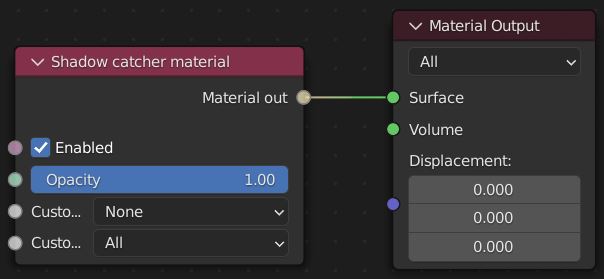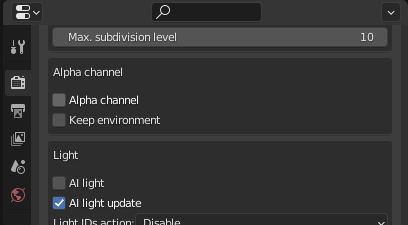
The Shadow CatcherThe Shadow Catcher can be used to create shadows cast by objects onto the surrounding background imagery. The shadows cast are not limited to simply a ground plane but can be cast onto other surfaces of varying shapes. option creates shadows cast by Objects onto the surrounding geometry. The shadows cast are not limited to a ground plane, but can be cast onto other surfaces of varying shapes. The DiffuseAmount of diffusion, or the reflection of light photons at different angles from an uneven or granular surface. Used for dull, non-reflecting materials or mesh emitters. and Universal material also has a parameter for enabling the shadow catcher.

Figure 1: A Model is integrated into an image using the Shadow Catching material

Figure 2: The Enabled checkbox
Enabled - The material is transparent unless there is some direct shadow cast onto the material, which makes it less transparent depending on the shadow strength.
Opacity - Controls the transparency of the shadows via a greyscale information.
Custom AOV - Writes a mask to the specified custom AOV.
Custom AOV Channel - Determines whether the custom AOV is written to a specific color channel (R, G, or B) or to all the color channels.
In the Render context window, activate Alpha ChannelA greyscale image used to determine which areas of a texture map are opaque and which areas are transparent. and disable Keep Environment (Figure 3). When the image renders, the shadows appear over the surface's transparent parts. This image treatment works in a compositing package to merge the Object and the shadows into the composition.

Figure 3: Activating the Alpha and Keep Environment checkboxes

Figure 4: Shadows cast onto the environment while the surfaces receiving the shadows are transparent